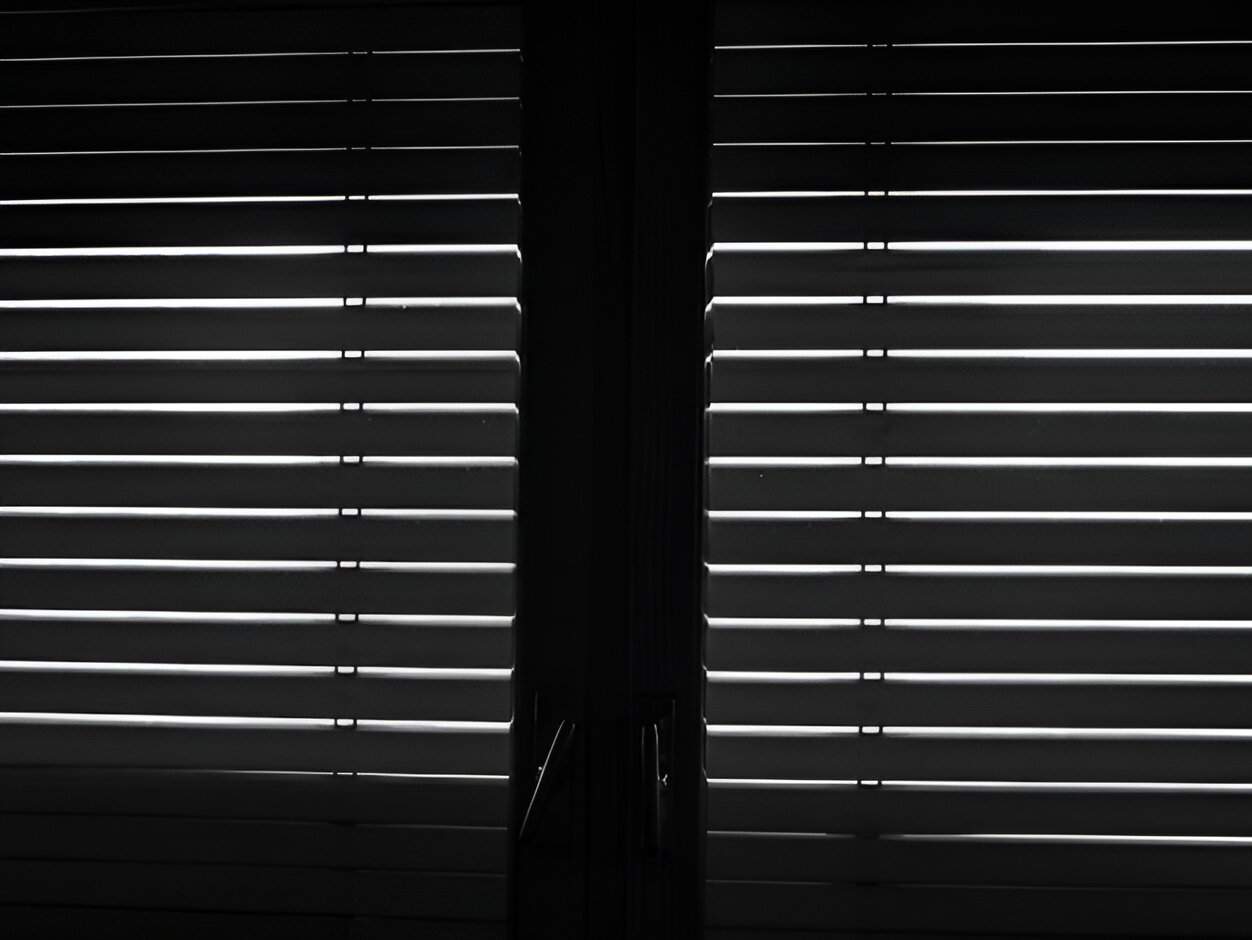Blackout blinds, also called room-darkening blinds or blackout shades, are window shades designed to block as much light as possible from entering a room. They are usually made of a thick, opaque material such as polyester or vinyl, and often have a blackout coating to further reduce light penetration.
What are Blackout Blinds?
Blackout blinds are a great choice for those who want to block light from their bedroom windows. These blinds have thick, black fabrics that can significantly reduce sunlight entering the room, making them a great option for those who want to sleep in a dark room. They come in a variety of sizes, styles, and colors, and can be easily adjusted to fit any window size. Additionally, many of these blinds come with several additional features, such as sound-blocking capabilities and built-in UVA protection. To find the best blackout blinds for your bedroom needs, consider material, sleeping position, and price.
The Benefits of Blackout Blinds
Blackout blinds are an effective way to block out light and create a dark, sleep-friendly environment. This can be especially beneficial for people who live in areas with a lot of light pollution or who have trouble sleeping in bright conditions.
In addition to blocking out light, blackout blinds can also help reduce noise and provide insulation, making them a great choice for bedrooms. Here are some of the benefits of getting a good night’s sleep:
- Improved mood and energy levels
- Increase productivity and concentration
- The risk of obesity, heart disease, and diabetes is reduced.
- Improved immune function
- Improves memory and learning
- Reduction of stress and anxiety
Blackout blinds offer many advantages, making them a popular choice for many homeowners. Some of the key benefits of blackout blinds are:
Light Control: Blackout blinds are designed to block out light, making them ideal for bedrooms, nurseries, and home theaters. They provide complete darkness, allowing for better sleep and privacy.
Energy Efficiency: These blinds can help control room temperature by preventing heat loss in winter and reducing heat gain in summer. This can lead to energy savings on heating and cooling costs.
Privacy: Blackout blinds provide an effective barrier against prying eyes, ensuring privacy indoors.
UV Protection: They can protect furniture, flooring, and artwork from fading due to sunlight, as they block harmful UV rays.
Noise reduction: Some blackout blinds also offer noise reduction features, which help create a quieter and more peaceful indoor environment.
Versatility: They come in a variety of styles, colors, and materials, allowing homeowners to choose the right option to complement their interior decor.
These benefits make blackout blinds a practical and versatile choice for light control and privacy in the home.
Factors to Consider When Choosing Blackout Blinds
When choosing blackout blinds, there are several important factors to consider. These factors can help you choose the right blackout blinds for your specific needs and preferences. Here are some important factors to consider:
Room and purpose:
- Consider the specific room where the blackout blinds will be installed. For example, bedrooms, nurseries, and home theaters may require different levels of lighting control.
- Think about the purpose of blinds. Is the primary goal to achieve total darkness for sleeping, reduce the brightness of screens, or create a private environment?
Ability to block light:
- Estimate the level of light blocking required for the room. Some blackout blinds offer complete light blocking, while others may allow a small amount of light to filter through.
- Assess the effect of the blinds on the overall lighting and atmosphere of the room at different times of the day.
Size and Fit:
- Accurately measure the windows where the blackout blinds will be installed. Consider the type of windows (eg, standard, bay, or skylight) to ensure a proper fit.
- Determine whether you need inside or outside mount blinds based on the frame and depth of your window.
Fabric and style:
- Choose fabrics and styles that complement the room’s decor and meet your practical needs. Options include fabric, vinyl, cellular, roller, or Roman blackout blinds.
- Consider the texture, color, and pattern of the blinds to ensure they enhance the aesthetic appeal of the room.
Light Gaps:
- Pay attention to potential gaps around the edges of the blinds when they are fully closed. Properly fitted blackout blinds should minimize light leakage around the edges to achieve maximum light control.
Moisture resistance:
- If the blinds will be installed in areas with high humidity or moisture exposure, such as bathrooms or kitchens, consider blackout blinds with moisture-resistant properties.
- Look for materials that are resistant to mold, mildew, and warping in humid environments.
By carefully considering these factors, you can choose blackout blinds that suit the specific needs of each room and provide the desired level of light control, style, and functionality.
Different Types of Blackout Blinds
Blackout blinds are designed to provide total darkness in a room, making them ideal for sleeping and movie nights. There are several types of blackout blinds available on the market, including pleated, rolled, and HSV.
Here are the most common types of blackout blinds:
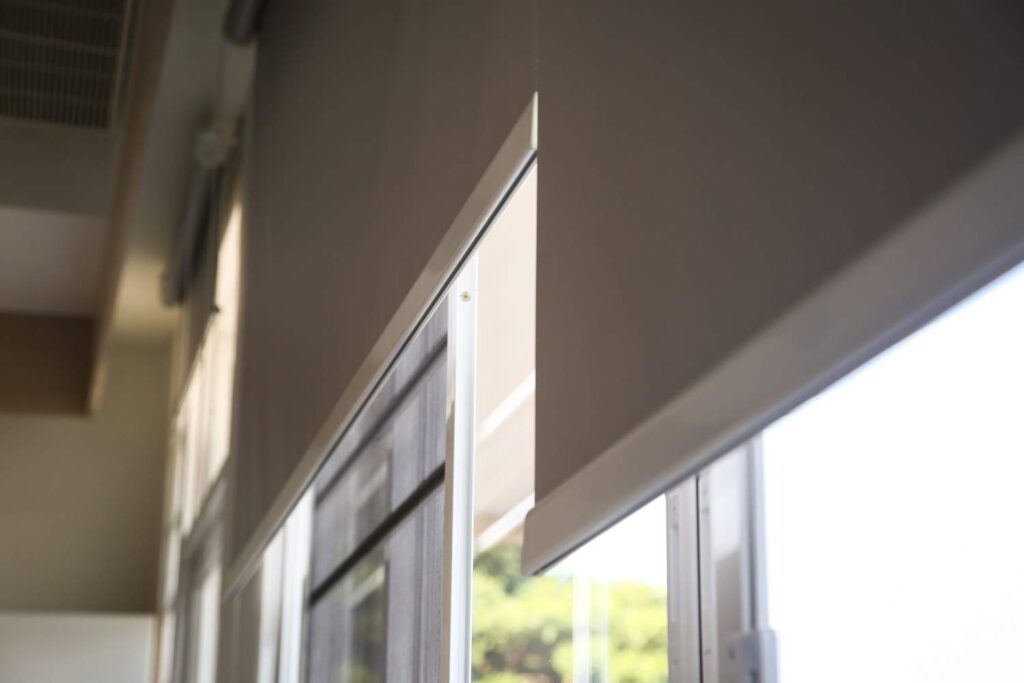
Roller Blackout Blinds: These blinds are made of a single piece of fabric that goes up and down to cover the window. They are operated using a simple chain or spring mechanism, making them easy to use. Roller blackout blinds are excellent at blocking out light, and they come in a variety of colors and patterns to suit different decorating styles.

Cellular Blackout Blinds: Also known as honeycomb blinds, these blinds have a unique cellular structure that traps air, providing excellent insulation and energy efficiency. The cellular design also makes them effective at blocking light, as the cells form a barrier that prevents light from entering the room. They are available in a range of colors and offer a modern, sleek look.
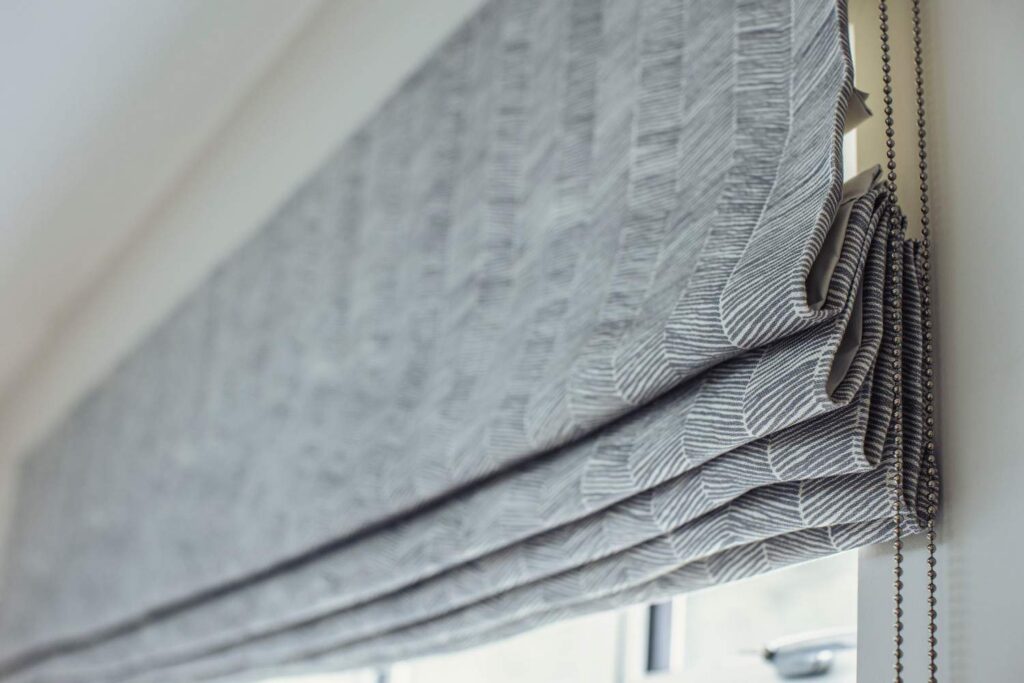
Roman Blackout Blinds: These blinds have a luxurious, fabric-based design that folds into neat pleats when raised. When lowered, they provide full blackout coverage, making them an elegant and stylish choice for bedrooms and living spaces. Roman blackout blinds come in a variety of fabric options, including linen, cotton, and polyester, to match the decor.
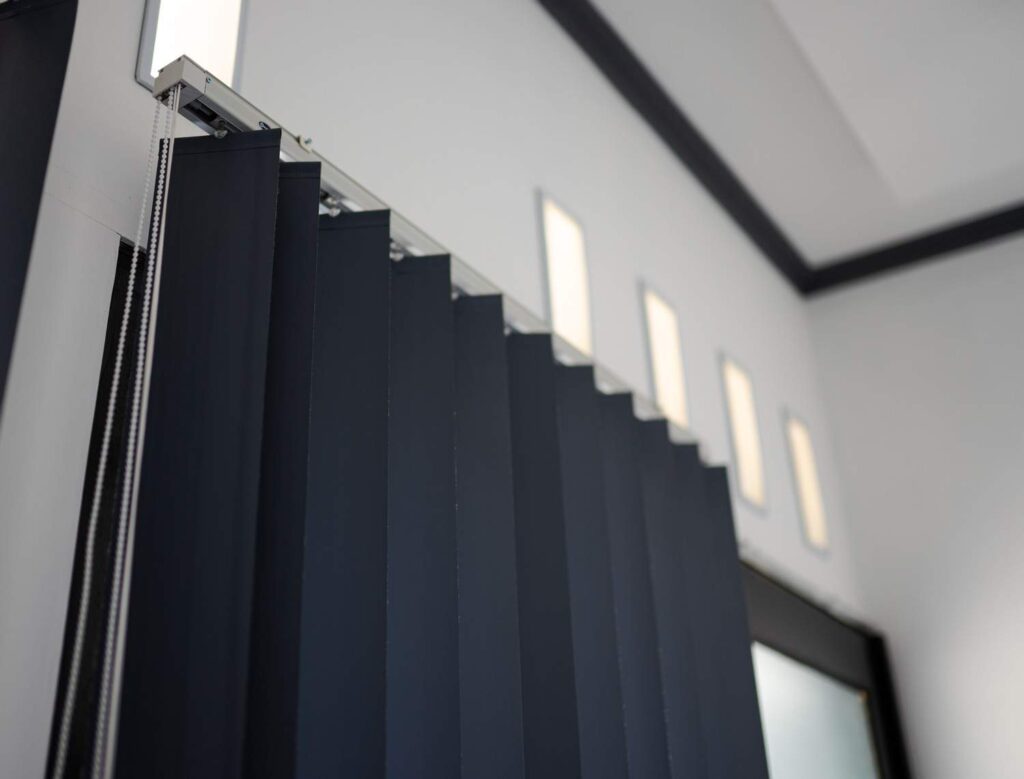
Vertical blackout blinds: Vertical blackout blinds consist of vertical slats that can be adjusted to control the amount of light entering the room. They are a versatile option for large windows and sliding doors, allowing precise control over light and privacy. The slats can be tilted to allow some light in while maintaining privacy, or they can be closed completely to block out light completely.
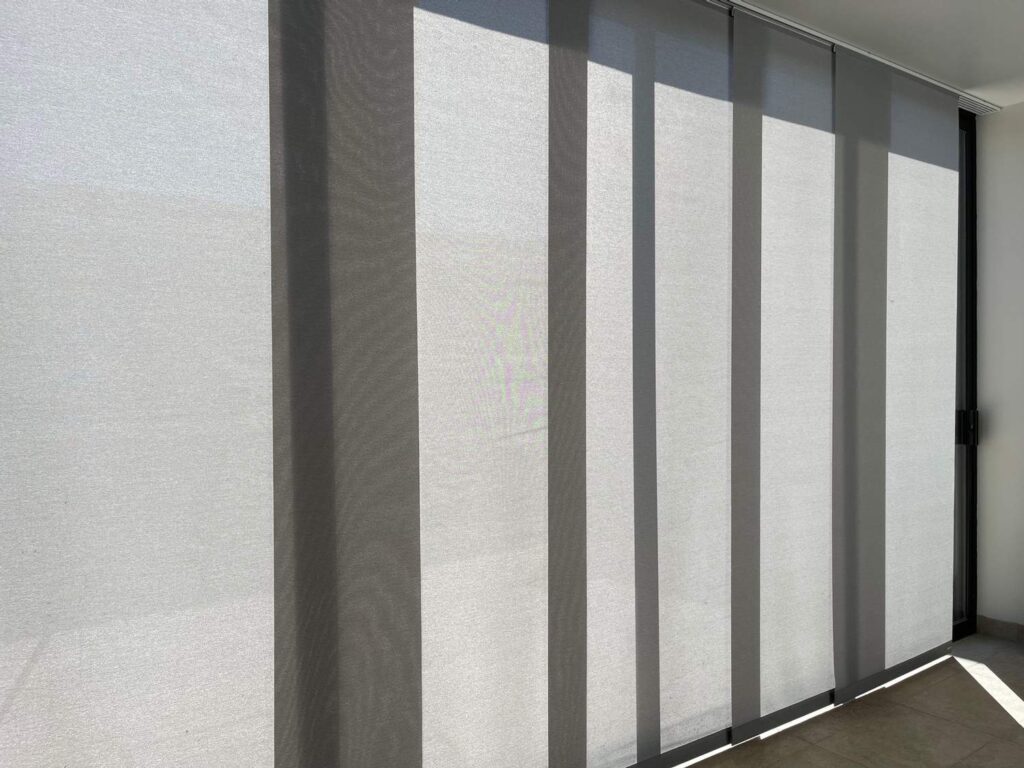
Panel Blackout Blinds: Panel blackout blinds consist of large fabric panels that slide across the window to provide blackout coverage. They are commonly used for patio doors and wide windows, as they offer a contemporary and sleek look while effectively blocking light. Panel blinds are available in a variety of fabric options, including both solid colors and patterns, making them a versatile choice for modern interiors.
When choosing blackout blinds, it’s important to consider the size of the room’s window and the amount of light you want to block.
Best Material for Blackout Blinds
When looking for the best material for blackout blinds, you should consider factors such as thickness, opacity, and durability. Some popular materials for blackout blinds include heavyweight cotton, polyester, and vinyl. These materials can either be lined with a blackout insert or the insert can be printed directly onto the blind. Look for blinds with a minimum opacity of 95% to 100%, which means you won’t be able to see sunlight or moonlight through the blinds even during a power outage.
Here are some of the most common materials used for blackout blinds, along with their pros and cons:
- Polyester:
Pros:
- Affordable and widely available
- Durable and easy to clean
- Offers good light-blocking capabilities
Cons:
- May not be as effective as other materials in blocking out 100% of light
- Can be prone to wrinkling
2. Blackout Fabric:
- Pros:
- Specifically designed to block out light effectively
- Available in various colors and patterns
- Often has a smooth, wrinkle-resistant finish
- Cons:
- Can be more expensive than other materials
- May require special care and cleaning instructions
3. Vinyl:
- Pros:
- Extremely effective in blocking out light
- Durable and water-resistant
- Easy to clean and maintain
- Cons:
- Can be more expensive than other materials
- May not be as aesthetically pleasing as fabric options
4. Aluminum:
- Pros:
- Highly effective in blocking out light and heat
- Durable and long-lasting
- Fire-resistant and easy-to-clean
- Cons:
- Can be more expensive than other materials
- May not be suitable for all décor styles
5. Blackout Cellular Shades:
- Pros:
- Provide excellent insulation and light control
- Available in various colors and styles
- Energy-efficient and can help reduce heating and cooling costs
- Cons:
- Can be more expensive than other blind types
- May require more maintenance and cleaning
Ultimately, the best material for your blackout blinds depends on your specific needs, budget, and aesthetic preferences. Consider factors such as how much light you want to block, your budget, and the overall style of your room. By choosing the right material, you can enjoy the benefits of total darkness and privacy in your space.
Blackout Blinds vs. Alternatives
Blackout blinds are masters of darkness, but is this the only way to conquer unwanted light? Let’s compare them with some alternatives, weighing their strengths and weaknesses.
Blackout Blinds:
Pros:
- Supreme Light Blocking: Blocks out even the brightest sun, ideal for bedrooms and media rooms.
- Variety of styles: Available in different materials, colors, and operating mechanisms (roll-down, pleated, etc.).
- Thermal insulation: Some materials such as cellular shades offer additional heat retention.
- Privacy: Provides complete visual barrier from the outside.
Cons:
- Expensive: Can be more expensive than some alternatives.
- Bulkier: Takes up more space than curtains, especially thicker materials like PVC.
- Cleaning can be difficult: Some materials require special care, and dust behind them can be difficult to access.
- Ventilation problems: Some rooms can trap moisture and heat, especially non-breathable materials.
Alternatives:
1. Blackout Curtains:
Pros:
- Softer, more decorative: adds warmth and texture to a room.
- Often cheaper: Can be more budget-friendly than blinds.
- Drape Better: Creates a flowing, elegant look.
- Easy to wash: Unlike some blinds, most are machine washable.
Cons:
- Light leakage: Not as effective as blinds at blocking all light, especially around edges.
- Low insulation: Thinner fabrics provide less thermal protection.
- Wrinkling: Some materials wrinkle easily and require ironing.
- Dust collection: Can gather dust like any fabric curtain.
2. Room Darkening Shades:
Pros:
- Good light blocking: effective at blocking most light, although not as complete as blackout blinds.
- Variety of Styles: Available in different materials and textures such as roller shades or Roman shades.
- Privacy: Provides good visual barrier from outside.
- Controlled light filtering: Some shades offer adjustable opacity.
Cons:
- More expensive than curtains: These can be more expensive than basic curtains.
- Poor insulation: Not as effective as blackout blinds to control temperature.
- Dust Collection: Depending on the material, regular cleaning may be required.
- Operating Mechanisms Can Break More complex mechanisms than simple Curtain.
Choosing the best option depends on your preferences. If absolute darkness and insulation are key, then blackout blinds reign supreme. For a soft-touch and budget-friendly solution, blackout curtains can be ideal. Films are affordable and offer viewing protection, while room black shades give you control over light levels. Ultimately, consider your needs, budget, and room aesthetics to find the perfect light-blocking champion for your space!
Blackout Blinds Installation and Maintenance
Blackout blinds offer the ultimate escape from unwanted light, but their power comes with some responsibility. Installing and maintaining them correctly ensures they keep the sunshine at bay for years to come. Here’s a guide to help you navigate the process:
Installation of blackout blinds
Installation of blackout blinds involves the process of mounting and arranging the blinds to effectively block light and provide privacy. Here is a detailed breakdown of the installation process:
Preparation: Before installation, it is necessary to gather the necessary tools and materials, such as measuring tape, drill, screws, brackets, and blackout automatic blinds. Clear the area around the window to make room for the installation process.
Window Measurements: Accurate measurements are critical to a proper fit. Measure the width and height of the window frame to determine the size of the curtain needed. Consider whether the blinds will be installed inside or outside the window frame.
Mounting Bracket: Install the mounting bracket according to the manufacturer’s instructions. Brackets are usually attached to the window frame or wall, and they provide support to the curtains. Make sure the brackets are level and securely attached.
Attaching the blinds: Once the brackets are in place, attach the blackout blinds to the brackets. This may involve sliding the blinds into brackets or securing them with screws or clips, depending on the type of blind.
Testing and adjusting: After installing the blinds, test them to make sure they operate smoothly and cover the window completely. Adjust the blinds as needed to achieve the desired level of coverage and privacy.
Finishing Touches: Once the blinds are installed and adjusted, trim any excess cord or cords for a neat and secure finish. Clean off any dust or debris that may have accumulated during installation.
Following these steps will help ensure a successful installation of blackout blinds, creating a dark environment and providing privacy in the room.
Maintenance of Blackout Blinds
Cleaning: Regular cleaning is key to keeping your blinds looking their best and functioning properly. The method of cleaning depends on the material:
- Fabric blinds: Use a vacuum cleaner with a soft brush to regularly remove dust. For deep cleaning, clean the area with a damp cloth and mild soap. Avoid soaking or using harsh chemicals.
- PVC blinds: Clean with a damp cloth and mild soap. Avoid abrasive cleaners or sponges that can scratch the surface.
- Cellular Shades: Use a vacuum cleaner with a soft brush to remove dust from fabric surfaces. For the honeycomb sections, tap them gently or use a can of compressed air to remove the dust.
Mechanism Maintenance: Regularly check the operating mechanism for any signs of wear or tear. Lubricate metal parts with a silicone-based lubricant to ensure smooth operation.
Dust control: To minimize dust accumulation, keep windows and surrounding areas clean and use an air purifier in the room.
Additional tips:
- Avoid moisture: Do not install blackout blinds in areas with high humidity or near water sources, as this can promote mold growth.
- Extreme temperatures: Avoid exposing blinds to extreme heat or cold for long periods, as this can damage the material.
- Repair: If any part of the blinds gets damaged, do not hesitate to repair or replace them immediately to maintain their functionality and avoid further problems.
By following these installation and maintenance tips, you can ensure that your blackout blinds remain your loyal ally in the fight against unwanted light, keeping your space dark, private, and cozy for years to come. Keep comfortable.
FAQs
What type of blind is best for blackouts?
Venetian blackout blinds are a good choice if you want something that provides a complete blackout of light while still being stylish. They are easy to operate and provide effective light control.
What are the disadvantages of blackout blinds?
Disadvantages of blackout blinds include offering a low level of light control. Unlike louvered blinds, they cannot be easily adjusted to let in the right amount of sunlight.
Which shades are best for blackout?
Some of the best blackout shades include roller blackout shades, Roman blackout shades, vertical blackout shades, cellular blackout shades, and cordless blackout shades. Each style offers its unique features and benefits.
What are the different types of blackout blinds?
Different types of blackout blinds include roller blinds, Roman blinds, vertical blinds, day and night blinds, and skylight blinds. In addition, flame retardant, thermal, and waterproof styles are available.
What is a blackout blind made of?
Blackout blinds are usually made of opaque, light-blocking materials such as thick fabric, vinyl, or other synthetic materials. This material is designed to block light from passing through, effectively creating a dark environment.
What can I use as blackout blinds?
As an alternative to traditional blackout blinds, you can use materials like blackout curtains, blackout liners, or blackout fabric to achieve a similar light-blocking effect. This material can easily be attached to existing window treatments or used on its own to create a dark and private space.

